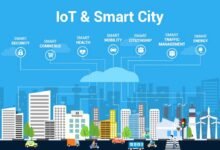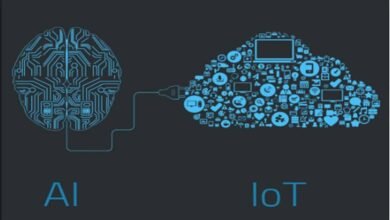
IoT and Smart Grids: Transforming Energy Distribution In 2024? In a world where technology continues to evolve, the intersection of the Internet of Things (IoT) and smart grids is revolutionizing the way we distribute and consume energy. This article delves into the transformative impact of IoT on energy distribution in 2024, exploring the role of smart grids, challenges faced, solutions implemented, and the global landscape of this dynamic industry
Definition of IoT and Smart Grids
The Internet of Things (IoT) refers to the network of interconnected devices that communicate and share data. In the context of energy distribution, smart grids leverage IoT to create an intelligent and efficient system for managing electricity.
Importance of Energy Distribution
Efficient energy distribution is crucial for a sustainable future. IoT and smart grids play a pivotal role in optimizing energy usage, reducing waste, and promoting the integration of renewable energy sources.
The Role of IoT in Energy Distribution
Smart Sensors and Devices
IoT devices such as smart meters and sensors enable real-time monitoring of energy consumption. This data allows utilities to make informed decisions, identify inefficiencies, and respond promptly to fluctuations in demand.
Data Collection and Analysis
The abundance of data generated by IoT devices empowers energy providers to analyze patterns, predict demand, and optimize the overall distribution network. This data-driven approach enhances the reliability and efficiency of energy distribution systems.
Smart Grids: A Game-Changer
Integration of Renewable Energy Sources
Smart grids facilitate the integration of renewable energy sources like solar and wind into the existing power infrastructure. This not only reduces reliance on traditional fossil fuels but also promotes sustainability.
Improved Efficiency and Reliability
The smart grid’s ability to self-monitor and adapt to changes in demand or supply enhances overall system efficiency. Additionally, it improves reliability by minimizing downtime and reducing the impact of power outages.
Challenges in Implementing IoT in Energy Distribution
Security Concerns
As IoT devices proliferate, concerns about cybersecurity rise. Securing the interconnected network against potential threats becomes paramount to prevent unauthorized access and protect sensitive data.
-
5 Useful Applications of Cellular IoT in Smart City Environments21 October 2024
-
What is an IoT Sim Cards and How does it Work?7 October 2024
Infrastructure Upgrades
Implementing IoT in existing energy grids often requires substantial infrastructure upgrades. The cost and complexity of these upgrades can be barriers to widespread adoption.
V. Solutions to Overcome Challenges
Advanced Encryption and Security Measures
To address security concerns, advanced encryption methods and robust security measures must be integrated into IoT devices and smart grid infrastructure. This ensures the protection of data and prevents unauthorized access.
Government Initiatives and Investments
Governments can play a crucial role in overcoming infrastructure challenges. Initiatives and investments that support the modernization of energy grids encourage the adoption of IoT technologies.
Read More: Implementing IoT for Urban Development In Smart Cities 2024
Case Studies
Successful Implementations of IoT in Energy Distribution
Examining case studies of successful IoT implementations in energy distribution provides valuable insights into best practices, challenges faced, and the tangible benefits achieved.
Lessons Learned
Learning from past experiences and understanding the lessons gleaned from various implementations can guide future endeavors toward greater success and efficiency.
Future Trends in IoT and Smart Grids
Artificial Intelligence Integration
The integration of artificial intelligence (AI) into IoT and smart grids is anticipated to be a game-changer. AI can enhance predictive analytics, automate decision-making processes, and optimize energy distribution in real-time.
Edge Computing
The adoption of edge computing, where data processing occurs closer to the source of data generation, is poised to improve the speed and efficiency of IoT applications in energy distribution.
Environmental Impact
Reduced Carbon Footprint
The shift towards renewable energy sources and the optimization of energy distribution through IoT and smart grids contribute significantly to reducing the carbon footprint associated with traditional energy production.
Sustainable Practices
Embracing IoT technologies promotes sustainable energy practices, fostering a global commitment to environmental conservation and a greener future.
IX. Benefits for Consumers
Cost Savings
Consumers stand to benefit from reduced energy costs as IoT-enabled smart grids enable better management of energy resources, minimizing waste and optimizing efficiency.
Enhanced Control and Monitoring
IoT devices empower consumers to have greater control over their energy consumption. Real-time monitoring and smart controls provide insights and the ability to adjust usage for optimal efficiency.
Global Adoption and Initiatives
Collaborations Between Countries
International collaborations and initiatives between countries are essential for sharing knowledge, resources, and best practices, fostering a collective effort towards global energy sustainability.
International Standards
Establishing and adhering to international standards in IoT and smart grid technologies ensures interoperability, security, and seamless integration on a global scale.
Industry Players
Leading Companies in IoT and Smart Grid Technologies
Highlighting key industry players and their innovations in IoT and smart grid technologies showcases the competitive landscape and the advancements driving the industry forward.
Innovations and Research
Ongoing research and innovations within the industry contribute to the continuous improvement and evolution of IoT and smart grid technologies.
Regulatory Framework
Policies Supporting IoT Integration
Examining the regulatory landscape and policies that support the integration of IoT into energy distribution is essential for fostering a conducive environment for innovation.
Compliance and Standards
Ensuring compliance with established standards is crucial for the seamless integration of IoT technologies, maintaining the integrity and security of energy distribution systems.
Public Awareness and Education
Understanding the Benefits
Raising public awareness about the benefits of IoT in energy distribution is vital. Education initiatives can dispel misconceptions and garner support for widespread adoption.
Promoting Sustainable Energy Practices
Encouraging individuals and communities to embrace sustainable energy practices through IoT technologies fosters a collective responsibility towards a greener and more sustainable
Real-World Applications
Smart Cities and Energy Management
Exploring how IoT and smart grids contribute to the development of smart cities and efficient energy management provides a glimpse into the urban landscapes of the future.
Industrial Applications
Examining how IoT technologies are transforming energy distribution in industrial settings sheds light on the advancements and efficiencies gained in manufacturing and production processes.
Conclusion
In conclusion, the convergence of IoT and smart grids is reshaping the landscape of energy distribution in 2024 and beyond. The seamless integration of these technologies enhances efficiency, promotes sustainability, and empowers consumers. As we navigate the complexities of security challenges and infrastructure upgrades, the benefits of reduced carbon footprint, cost savings, and enhanced control make the journey worthwhile. The future holds exciting possibilities with the integration of artificial intelligence, edge computing, and continued global collaboration. It’s imperative for governments, industries, and individuals to embrace these advancements for a more sustainable and resilient energy future.
FAQs : IoT and Smart Grids
How does IoT contribute to reducing the carbon footprint in energy distribution?
Explore how IoT enables the integration of renewable energy sources, reducing reliance on traditional, carbon-intensive methods.
What role does artificial intelligence play in the future of energy distribution through smart grids?
Delve into the potential of AI to enhance predictive analytics, automate decision-making, and optimize real-time energy distribution.
How can consumers benefit from IoT-enabled smart grids?
Learn about the cost-saving advantages and enhanced control that consumers experience through the adoption of IoT in energy management.
What are the major challenges in implementing IoT in existing energy grids?
Discuss the security concerns and infrastructure upgrades required, and how governments and industries are addressing these challenges.
Are there any successful real-world examples of IoT implementation in energy distribution?
Explore case studies showcasing successful IoT applications in energy distribution, highlighting lessons learned and best practices.







